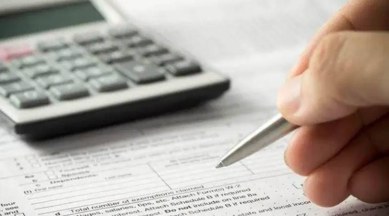Budget 2023: What could change for individual tax payers? Here’s what Nirmala Sitharaman could announce
Changes in the Goods and Service Tax (GST) rates impacts the monthly budget spends of taxpayers significantly, but it is the direct tax outgo that pinches the taxpayer the most.

Written by Aarti Rahul Raote
As we move closer to the Budget date, the anxiety of individual taxpayers has been increasing considerably with one major worry – Whether the tax outgo will increase?
monthly limit of free stories.
with an Express account.
Changes in the Goods and Service Tax (GST) rates impacts the monthly budget spends of taxpayers significantly, but it is the direct tax outgo that pinches the taxpayer the most. The finance minister had introduced the simplified tax regime in 2020 that offered lower tax rates to taxpayers, but this was at the cost of certain deductions and exemptions. Hence not many taxpayers opted for the new regime. This year hopes are high for an employee-friendly Budget.
Some common expectations are provided below:
a. Tax slab and rate rationalisation – The current income slab as well as the tax rates under the regular tax regime, have remained unchanged since FY 2017-18. One of the most common expectations of taxpayers has been that income slabs be enhanced, especially the basic exemption threshold. This would help the lower income group to save on taxes. Further, the tax rates for regular tax start from 5per cent – 20 per cent, which is a significant enhancement especially for a middle class taxpayer. While the tax rates under the simplified tax regime are lower, many taxpayers having significant expenses on rentals, housing EMIs, prefer the regular tax regime to the simplified tax regime.
The highest effective tax rate along with surcharge is 42.74 per cent, which is significantly higher than most neighboring regions. Progressive nations such as Hong Kong and Singapore, have tax rates less than 25 per cent, which builds a strong case for Indian tax rates also to be revisited.
b. Enhanced exemption and deductions – Currently the Income-tax Act provides for several exemptions and deductions that taxpayers can avail of, to reduce their tax obligations. Deductions for rent payments, housing loan and electric vehicle EMIs, investments under 80C, medical premiums, are some of the most common ones.
For many from the younger age group, who struggle to pay such expenses, the tax break proves to be a major relief.
Currently, a deduction of Rs 200,000 interest on housing loan is permitted as a deduction for interest on housing loan. In the initial years, the interest cost is significantly high and the modest amount of Rs 200,000 does not cover the interest actually paid. Hence the taxpayer has to forego the remaining interest deduction.
With interest rates for home loan rising again, the finance minister can look at the same.
Deductions such as 80C, 80D and education loans are utilised extensively by the middle-aged taxpayers who have the dual responsibility of looking after the health of aged parents and paying for their children’s higher education. The health situation, post-Covid, has become precarious with medicines, immunity boosters and healthcare costs on the rise. Hence it is necessary to increase both the limits for deduction under section 80D and also the kind of expenses that could be permitted as a deduction.
Prior to FY 2018-19, the tax deduction for medical expenses reimbursed by an employer up to a limit of Rs 15,000, was replaced by standard deduction. However, given rising healthcare costs, as well as increasing inflation rates, the current limit of standard deduction of Rs 50,000 needs to be enhanced.
A deduction under section 80TTA of INR 10,000 for interest from banks, post offices and cooperative societies is available from FY 2012-13. It is necessary that these limits are enhanced and also fixed deposits which are currently excluded from the purview of these deductions, be added as a category here. Likewise a deduction
80TTB of Rs 50,000 for interest income from 2018 for senior citizens. Now that dividends are taxable, is is requested that dividends also be included along with interest income and the deduction limit be enhanced.
c. Deduction for employees facing retrenchment/ lay-off – Last year saw many large MNCs handing out pink slips to their employees on account of fears of recession, downturn in business etc. While the tax laws provide a tax exemption for a Voluntary Retirement Scheme (VRS) or retrenchment compensation up to a sum of Rs 500,000, not many are able to avail of these on account of the stringent conditions inherent. Hence it will be a great relief to taxpayers who are laid-off, if the tax laws that grant exemption, are relaxed.
d. Operational efficiency – The tax department has been focused in its efforts to make it easy for taxpayers to comply with the tax requirements. The Annual Information Statement, the updation of 26AS, pre-filled tax returns, are all steps in the right direction. The timeline for tax return processing has also been shortened.
However at times there are gaps in processing of tax returns accurately, providing taxpayers with a copy of the intimation under section 143(1) and processing tax returns with treaty claims. The tax department needs to be focused on this part to ensure that taxpayers are not caught in unnecessary litigation and are assured of peace of mind post tax filing.
The direct tax collections for fiscal year 2021-22 increased by 19.81 per cent over the previous year and the advance tax collections till date also reflect an increasing trend. Thus, everything on the economic scene appears buoyant. The salaried class has about 90 per cent of its taxes withheld at source and hence it would be a great relief to them if the finance minister extends a few tax breaks without a claw-back.
– Aarti Rahul Raote is Partner, Deloitte India.